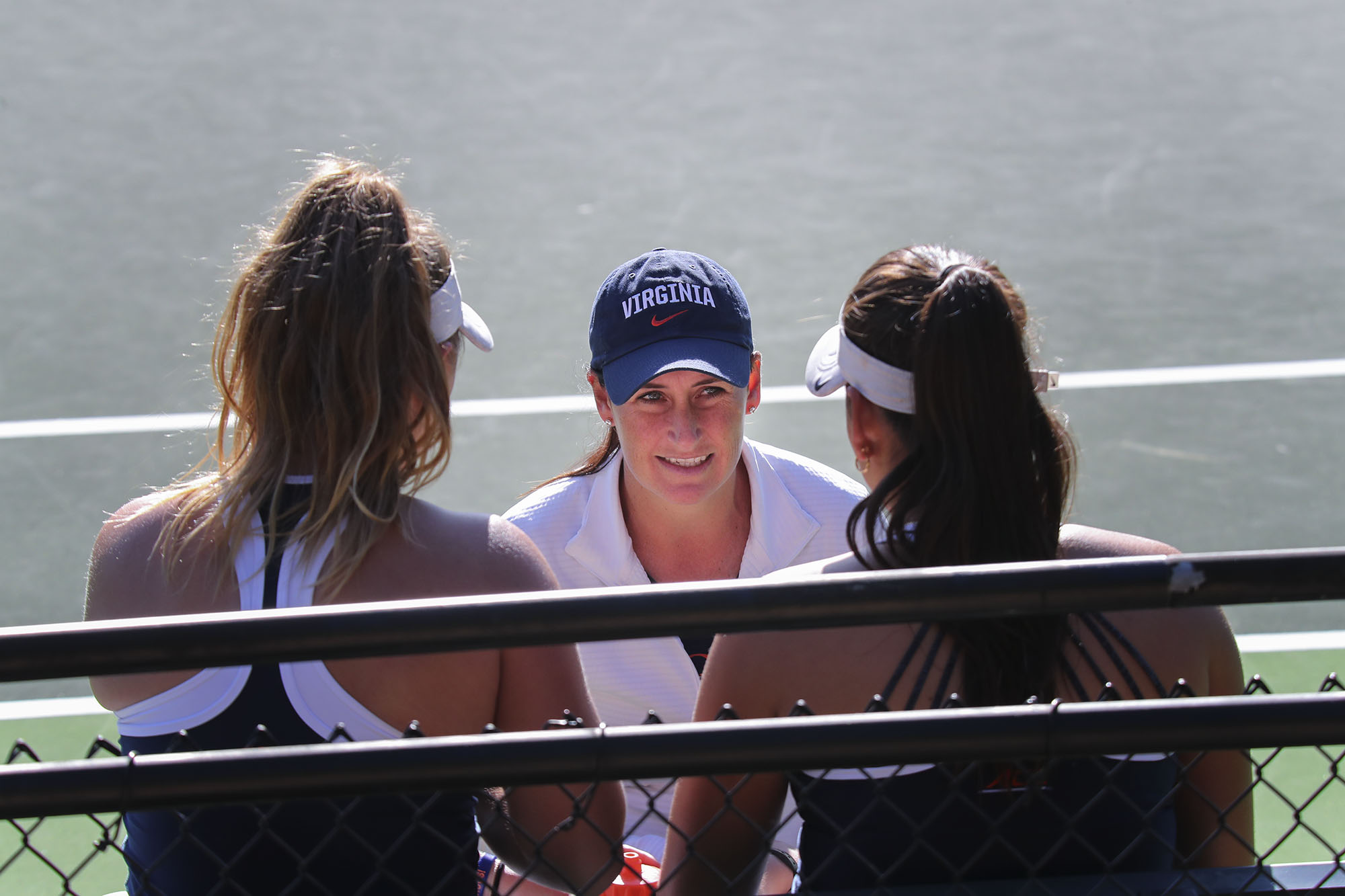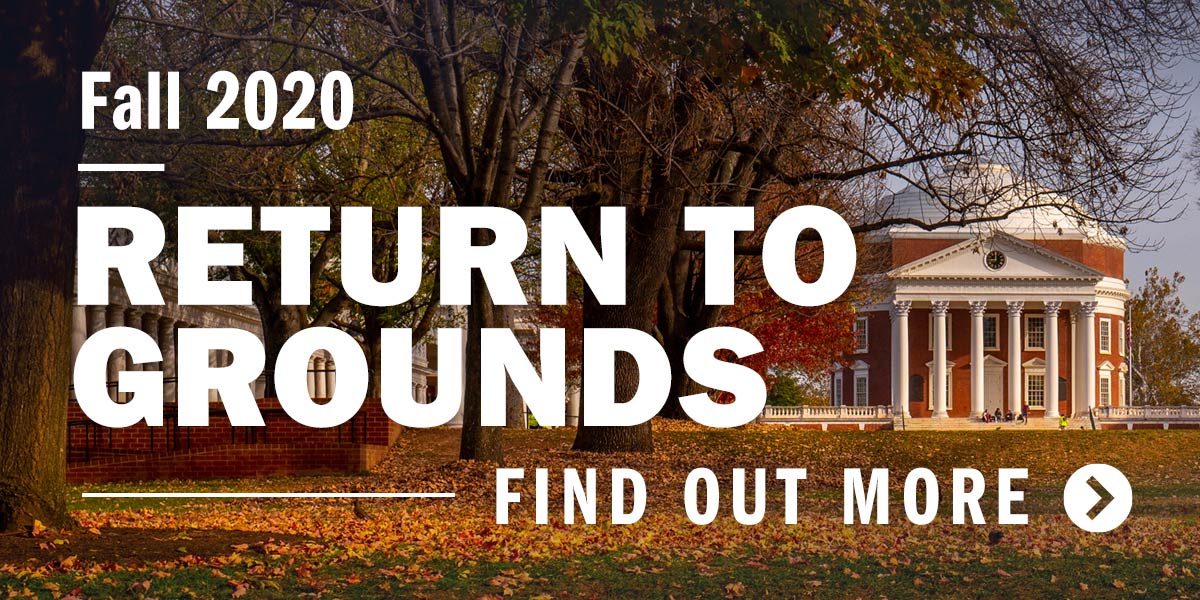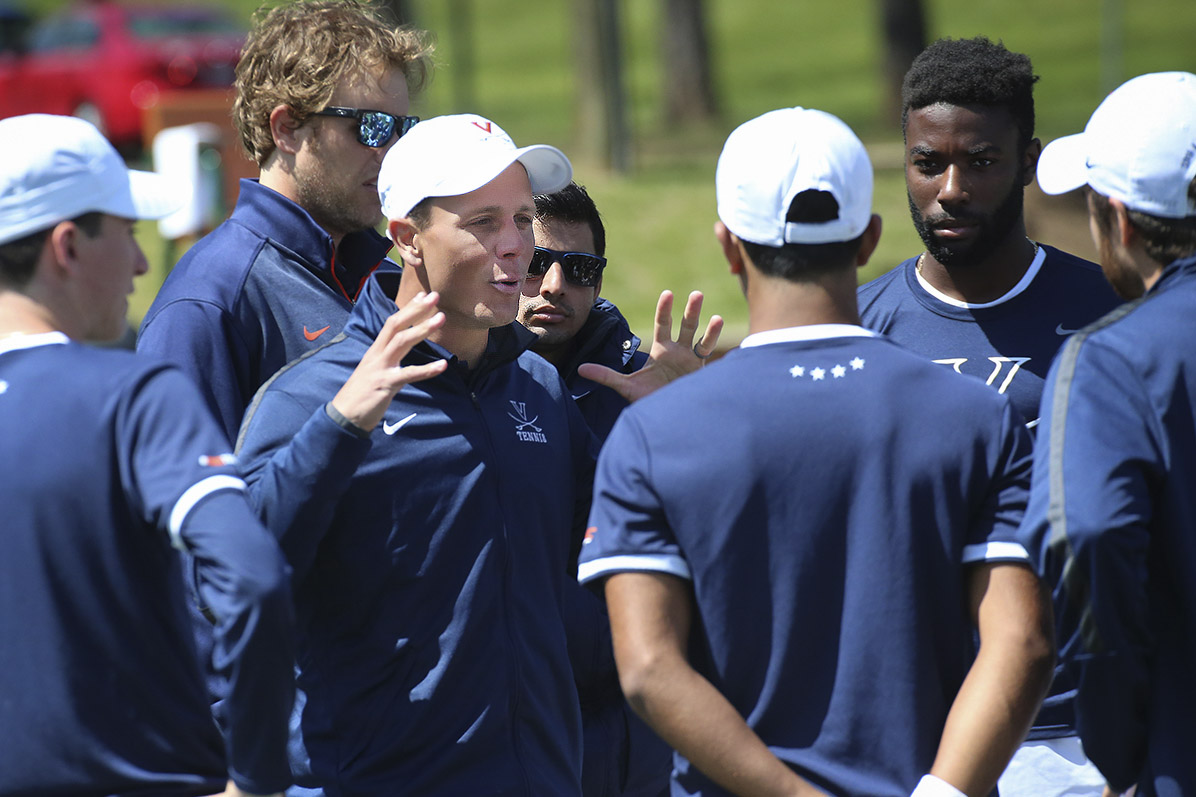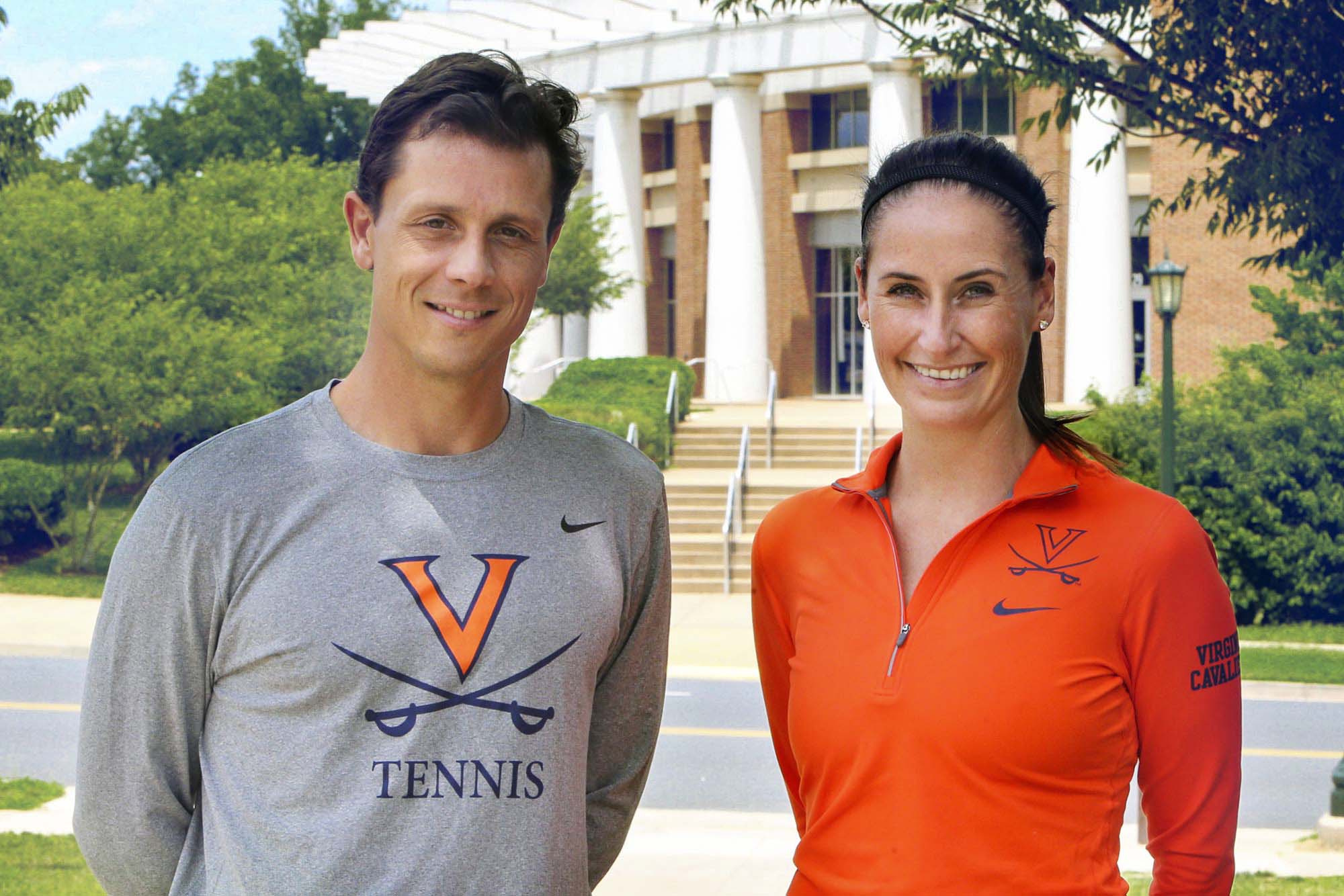It turns out that one of the safest activities you can partake in during a global pandemic is … tennis.
As people around the world adapt to new and everchanging circumstances brought on by the coronavirus, the sport has been at, or near, the top of various lists and rankings of low-risk activities in which people of all ages can participate.
With this in mind, UVA Today caught up with University of Virginia men’s and women’s head coaches Andres Pedroso and Sara O’Leary – both of whom have young children – to learn more.
Q. In the times that we’re living in, can you explain to people who may not be that familiar with tennis why it has been deemed by many to be such a safe activity?
Pedroso: There is always a risk, but overall I think it is clear that tennis is one of the safest sports, especially if we are washing our hands before and after we play, as well as keeping our hands away from our face. As long as we stay away from embracing or shaking hands at net after a match, I believe our chances are good of making outdoor tennis a safe sport and means of exercise.
O’Leary: I think the best way to play tennis safely during this time is keep your distance from whoever you are playing with by sitting at least six feet apart from each other during water breaks. Bring your own water so you are not touching the same cooler or water fountain. Lastly, mark half of the balls with one color and the other half a different color. You are only allowed to touch one colored ball during the practice. Whoever you are playing with can only touch the other colored balls. That way you are never touching the same surface.
Pro exhibition tennis tournaments are happening all around the world using this safe practice and proving that we can play tennis safely during the pandemic.

Sara O’Leary says using foam balls is a good way to teach younger children.
Q. What are some of your earliest childhood memories of learning how to play tennis? Who were your teachers and do you recall any of the things they would do with you in terms of drills and things of that nature?
O’Leary: I remember taking a few private and group lessons when I was just starting out, but I definitely have a lot of memories of hitting by myself against the backboard on our neighborhood courts. I remember loving tennis and wanting to hit all the time, and the backboard allowed me to hit whenever I wanted.
I had some excellent coaches over the years and they helped me fall in love with the sport. I had a lot of different coaches during my junior career who all had different coaching styles, but I learned and took something from each of them. I learned technique, strategy, composure, how to handle adversity and so much more. I was very fortunate to have a lot of great coaches who had such a positive impact on my life and helped me find my true passion and become a coach myself.
Pedroso: I just came across an article in the Wall Street Journal by James R. Hagerty, where he talks about the vital importance of “deliberate practice” for elite performers. My “deliberate practice” took place, as a junior tennis player, in a number of ways, beginning with watching a tremendous amount of tennis on TV. Most people are visual learners and so it’s amazing how much people, especially little kids, pick up by watching others perform a skill.

I also spent a tremendous amount of time practicing by myself against the wall near my house, where I made believe I was playing a Wimbledon or Roland Garros final against Stefan Edberg or Andre Agassi.
I was also lucky enough to have had a great junior coach in Miami, Robert Gomez, who instilled in me a love for the game, an aversion for making excuses and a mentality of earning everything that I strove to accomplish through hard work.
Q. For parents who are just getting out there and trying to teach their kids how to play for the first time, do you have any specific recommendations, tips or words of wisdom?
O’Leary: I would say to try and find a light kid’s racquet and foam tennis balls to start out with if teaching young kids. These balls are lighter, travel slower and are a bit bigger, making it easier for young kids to make contact with. I also think just hand-tossing the balls to your kids is the best way to make sure it is easy for them to make contact. Once they get the hang of that, then you could start tossing balls from the opposite side of the net and eventually trying to hit back and forth. I think progressions are always good.
I would say to make it as fun as possible for your kids and give them a voice when it comes to how much they want to play. I also think if your kid does take a real interest in the sport and wants to pursue tournaments, don’t worry about the results. Stay focused on their development. It is easy to get focused on the wins and losses, but that can take away from the long-term development and the love of the game for your kid.
Pedroso: At the early ages, follow their lead. … If they love it, there will be times that they will want to quit because the adversity in tennis can be overwhelming at a young age. However, as a parent, it’s your job to know when to push and when to give them some slack. This is why parenting is so hard, especially in tennis.
Ideally though, the kids should be the driving force in how much they train, how many tournaments they play and the selected sacrifices they are willing to make in order to enhance their development. I’m a big believer in players have a loud voice in the developmental process with sound advice and collaboration from family, a coach and a mentor they trust.

Andres Pedroso says a wall or backboard is a great way to practice if you can’t find a partner.
Q. If you’re an adult who has literally never picked up a racket, what would be your advice?
Pedroso: If you have the means to take lessons, find a coach that can show you the basic fundamentals of the game. This game is no fun if you don’t know how to hit the ball properly. The game becomes monumentally more enjoyable when you can achieve a rally and in order to rally, you usually need to have pretty good fundamentals.
If you don’t have the means to pay for tennis lessons, then the wall is your best friend. The use of a wall or backboard is a teaching and training tool that is almost completely lost in our sport. The majority of my generation and the generations before me learned how to control the ball, proper footwork, ball recognition and ownership of one’s game thanks to hitting against the wall.
If neither of these two options work for you, then go out there with a friend, be patient with yourself and run for everything. Tennis is great exercise and it’s humbling. Tennis can be a great opportunity to laugh at yourself for an hour.
O’Leary: I think finding a coach who can teach you the fundamentals is huge. If you have decent fundamentals and learn how to simply consistently return the ball over the net, tennis can be a lot of fun and a great workout. It is also a sport that you can play your whole life and is a great way to meet other people.
If you are not able to have a coach, there are plenty of videos online that help with the technique of each stroke and tennis is almost always on TV. I watched a lot of tennis growing up and that was a great way to educate myself on the sport.
Q. The lack of Americans to reach the upper echelon of the sport at the pro level has long been a hot topic. Do you think all these people suddenly turning to tennis during these times could wind up being a really good thing for the sport in the long run?
O’Leary: It definitely could. Over the past few years though, the American women have really been making a statement on the professional tour. Two Americans are in the top 10, Sofia Kenin and Serena Williams, and then you have 17 American women in the top 100 in the world, including UVA’s Danielle Collins, who has been ranked within the Top 25!! I think it is a really exciting time for American tennis, and the interest in tennis during the pandemic I think can only help.
Pedroso: I certainly hope so, but let’s not forget that the current generation of young American pros is a very exciting one. Sofia Kenin just won the Australian Open in January and Coco Gauff is probably the best female athlete I’ve seen on a tennis court, since Serena Williams.
On the men’s side, we have a group of 18- to 22-year-old American male pros who are very close friends and in my opinion, are on track to compete for Slams in the coming three to four years. Hopefully these young American pros can inspire kids of all socioeconomic and cultural backgrounds to play the sport more consistently and the United States Tennis Association, International Tennis Federation and Universal Tennis Ranking can join forces to make both training and competition more affordable for everyone.
I also think all of the socially distanced exhibition events happening across the country and being televised on The Tennis Channel are only helping us promote the sport during this challenging time.
Media Contact
Article Information
July 2, 2020
/content/tennis-anybody-hoos-coaches-give-tips-popular-pandemic-activity

